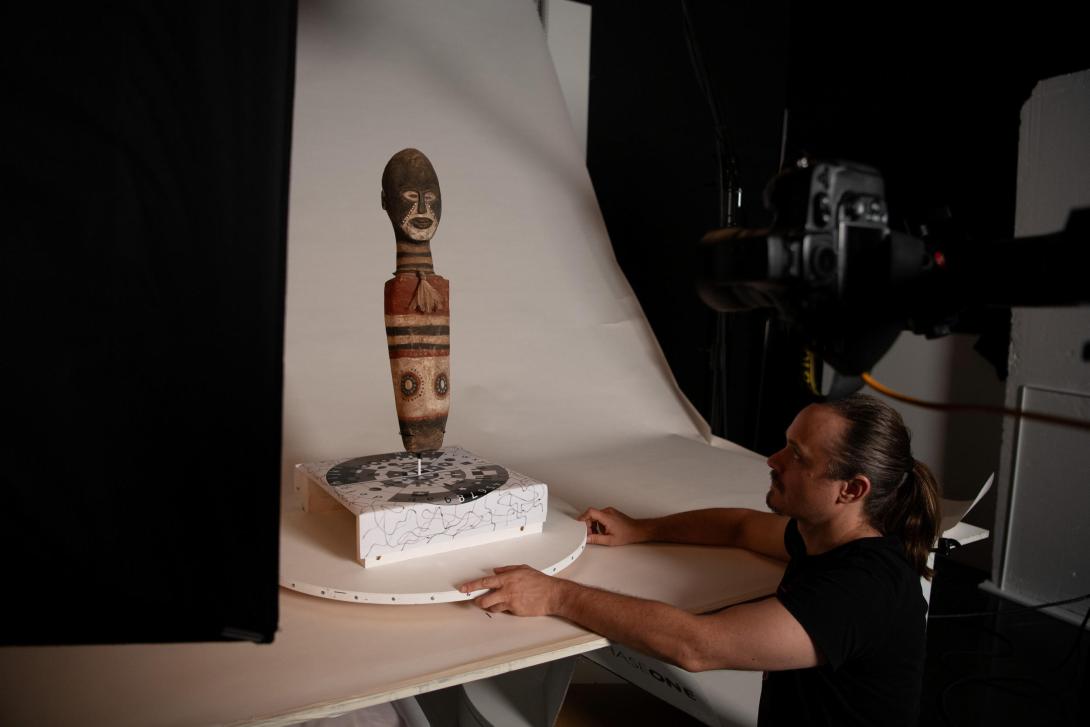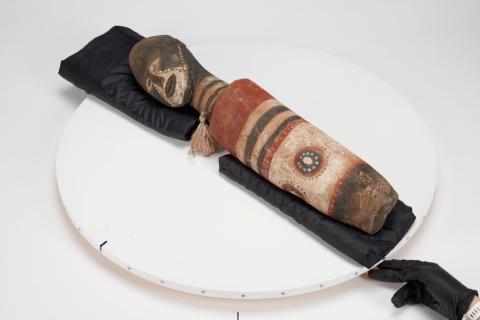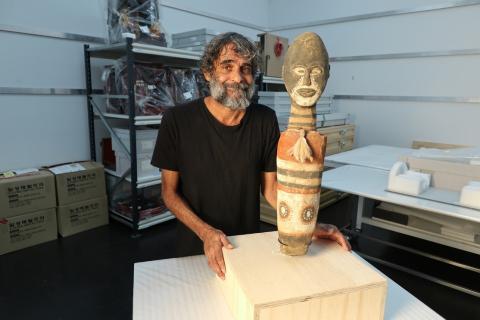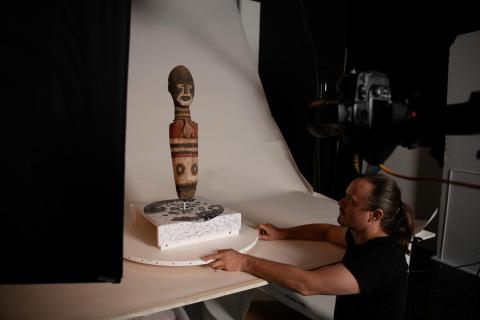The Embrey sculpture in 3D
As part of QAGOMA’s Digital Transformation Initiative, the Gallery’s photography team often collaborates with conservators, coders and designers in its quest to make the Collection available to everyone. Recently, Nicholas Umek (Senior Photographer) and team worked with Thomas Renn (Motion Designer), using photogrammetry to create a 3D model of Fred Embrey’s century-old figurative sculpture — one of only three known works in its genre.
Photogrammetry is a process of creating a 3D model by taking 100s of photos of an object, from all angles, and using software to combine these into a digital replica. Innovations like this are made possible at QAGOMA through the support of donors to the Unlock the Collection campaign.
Explore Fred Embrey’s sculpture in 3D

Collection Online Photographer Mark Sherwood prepares Fred Embrey's Djan’djari figure c.1930 for photogrammetric capture, QAGOMA, January 2024 / Purchased 2020 with funds from the Mather Foundation through the Queensland Art Gallery | Gallery of Modern Art Foundation / Photograph: N Umek © QAGOMA
3D imaging at QAGOMA
An interview with Thomas Renn and Nicholas Umek
Thomas Renn | Photogrammetry is a process of creating a 3D model by taking a lot of photos of the subject, typically working in rings around it. We use software to identify points of interest — say, an interesting little scratch — and cross-reference that scratch across all the different photos. By seeing how much this point of interest moves relative to other points in each photo, we can guess its 3D position. This happens over and over again, from all angles and orientations, until we create a little cloud of points in space. We can use these to build a 3D geometric mesh — ideally, a perfect replica of an object in 3D space.
Nicholas Umek | It’s a bit like papier-mâché, really, except we’re using images to clad this hollow geometry. It’s almost like an animal pelt that we’re cladding over a sort of weird digital taxidermy . . . Read More

Djan'djari figure 1930s
- EMBREY, Fred - Creator


